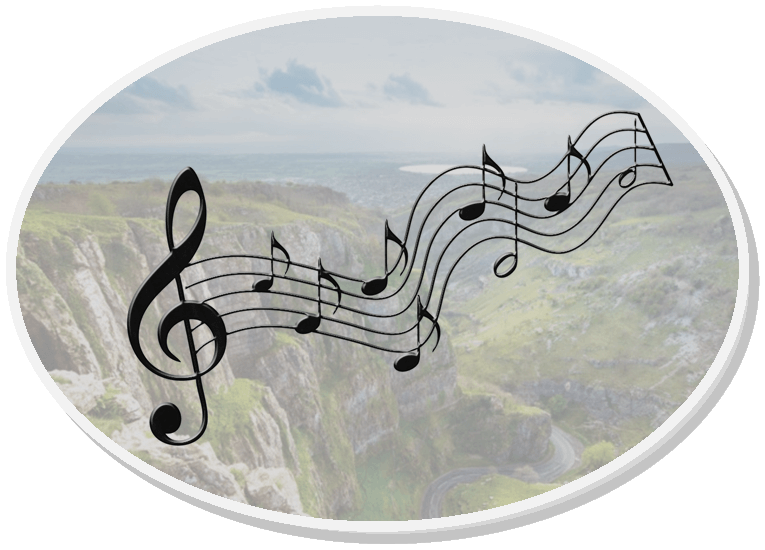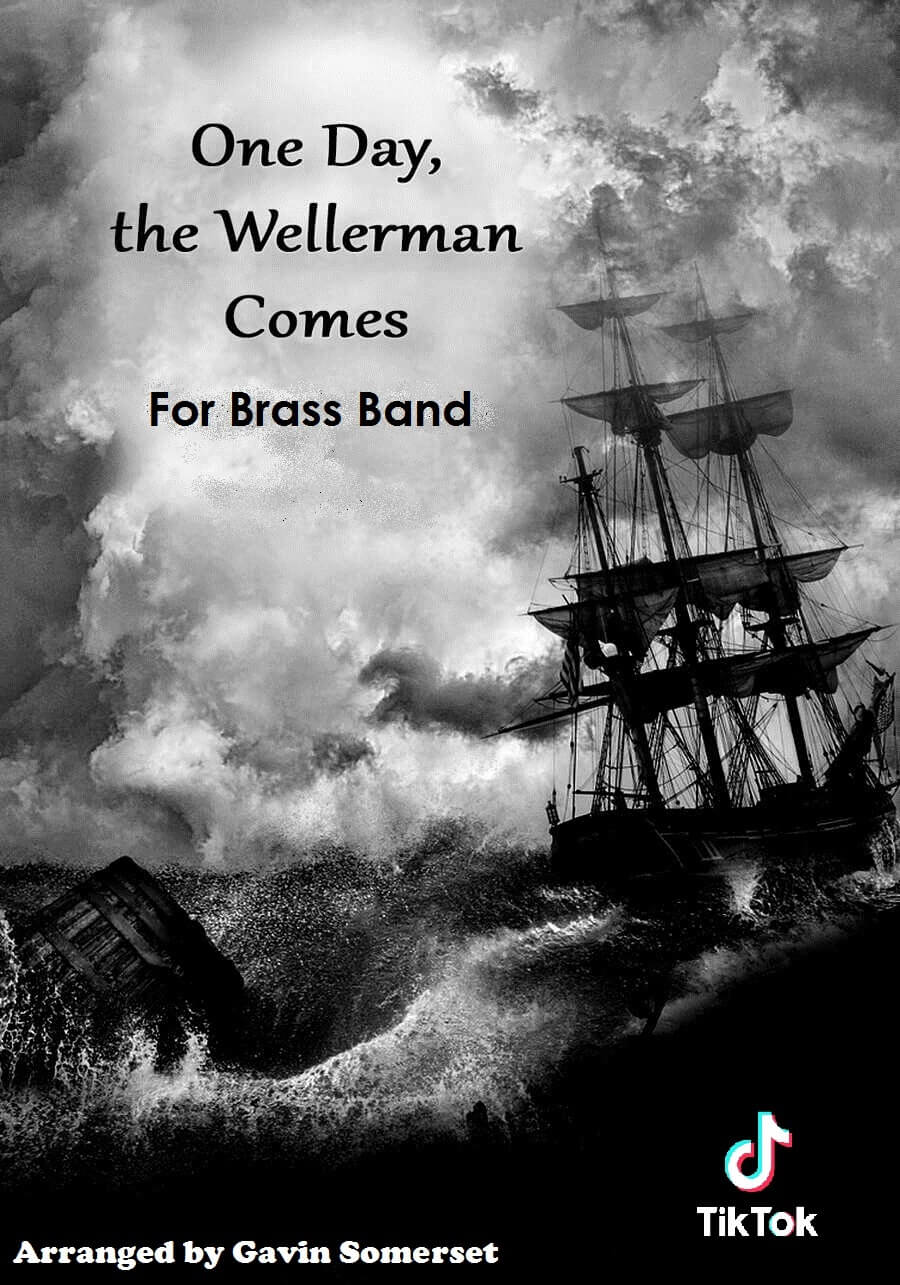Results
-
 £24.50
£24.50W.S.B. March - Gavin Somerset
After performing a number of arrangements by Gavin Somerset, the band commissioned him to compose for them, an original march that would serve as their signature tune for years to come. The march was composed in a light 6/8 time that would get passes by listening and audience's feet tapping along. Composed with a DC, this is optional and the finale of the march has a licence for a Grandioso and accelerando to give the work that flair for its finale. To download the Solo Cornet part, please CLICK HERE . To download the Solo Horn part, please CLICK HERE . To download the Solo Euphonium part, please CLICK HERE . To download the playback audio to play along to, please RIGHT CLICK HERE & Save As .
In Stock: Estimated dispatch 1-3 working days
-
 £29.50
£29.50The Wellerman - Traditional - Gavin Somerset
This traditional Whaling song went viral around the world on social media platform TikTok during the Covid-19 lockdown in early 2021. Starting with a lone voice, more and more singers & instrumentalists began adding their harmonies and improvisations to the melody until, there were literally hundreds of people all working together to create a global voice, including some big name celebrities. This release allows your band to recreate the viral hit and when back on stage, add your own choreography and optional singing with this shanty that has found a new appreciation amongst younger audiences and reflects the hard times many faced during the covid lockdown. To download the playback audio to play along to, please RIGHT CLICK HERE & Save As .
In Stock: Estimated dispatch 1-3 working days
-
£29.50
New Horizons - Max Stannard
This composition was originally written for the Horwich RMI Band to commemorate the life of Matthew Densfield, who has a drummer in his school brass band before his passing at an early age. This is a lively and energetic concert opener which encapsulates Matthew's love of live and rhythm as a drummer. This would be an excellent opener for your next concert and suitable for most bands from 4th to championship section to play. Duration: 3 minutes.
In Stock: Estimated dispatch 1-3 working days
-
£37.50
Midnight in Cairo - Steven Ponsford
Midnight in Cairo is a fun and light piece of music, suitable for anywhere in a concert. It is atmospheric in its nature, conjuring up images of the lively nightlife in the streets against the backdrop of the Nile and the other ancient wonders of this vibrant city. The music starts in a mysterious mood, with soft vocals around the band accompanying the main theme, before the piece takes off. There are solos for trombone and cornet, which will benefit from the players standing up to play, and improvising if possible.
In Stock: Estimated dispatch 1-3 working days
-
£29.50
The Children's Sweet - Ron Glynn
This work is a "Sweet" (A pun on Suite) containing three Children's Nursery Songs, including "Girls and Boys come out To Play" "Oh Dear What can the matter be and "The Grand Old Duke of York" feature a Flugel Horn and a Eb Bass Solos.Ideal concert item with children in the audience.
In Stock: Estimated dispatch 1-3 working days
-
£29.50
So Amazing - Traditional - Jonathan Mead
'So Amazing', is a beautiful new hymn tune arrangement from the pen of Welsh Composer Jonathan Mead. The music would create a lovely moment in a concert, where the audience would have time for reflection. The title comes from the words that are often associated with this tune, 'Love so amazing, so divine,'. The tune used, is also well known in the brass band world as, 'The Water is wide'. The music is lovely to play as well as listen to. A must for any Concert Programme.
In Stock: Estimated dispatch 1-3 working days
-
 £64.95
£64.95Music for Greenwich (Brass Band - Score and Parts) - Gregson, Edward
Music for Greenwich was commissioned in 1980 by the Greenwich Theatre, London, for a new production of Peter Buckman's play 'All Together Now'.In this play, about a down-at-heels brass band in the North of England brought to a new level of self-confidence and achievement by an incoming conductor, the whole cast performed a test piece on stage every night (i.e. Music for Greenwich), in readiness for a competition which they have entered and, of course, win. Although the play is as much a social commentary as anything to do with music-making, every member of the cast had to be able to play a brass instrument to a greater or lesser extent (a difficult challenge for the casting Director!).For obvious reasons, the music is not technically difficult. The work is structured as follows: a brief fanfare-like opening is followed by an allegro section, rhythmic and playful; a slow lyrical section is then introduced (a suitably nostalgic melody featuring solos for cornet and trombone), before a return to the fast music, a hint of the fanfare, and finally a climactic flourish to round things off. This is music to be enjoyed, as hopefully it was every night by the audience and actors alike.Duration: 5.00
Estimated dispatch 7-14 working days
-
 £24.95
£24.95Music for Greenwich (Brass Band - Score only) - Gregson, Edward
Music for Greenwich was commissioned in 1980 by the Greenwich Theatre, London, for a new production of Peter Buckman's play 'All Together Now'.In this play, about a down-at-heels brass band in the North of England brought to a new level of self-confidence and achievement by an incoming conductor, the whole cast performed a test piece on stage every night (i.e. Music for Greenwich), in readiness for a competition which they have entered and, of course, win. Although the play is as much a social commentary as anything to do with music-making, every member of the cast had to be able to play a brass instrument to a greater or lesser extent (a difficult challenge for the casting Director!).For obvious reasons, the music is not technically difficult. The work is structured as follows: a brief fanfare-like opening is followed by an allegro section, rhythmic and playful; a slow lyrical section is then introduced (a suitably nostalgic melody featuring solos for cornet and trombone), before a return to the fast music, a hint of the fanfare, and finally a climactic flourish to round things off. This is music to be enjoyed, as hopefully it was every night by the audience and actors alike.Duration: 5.00
Estimated dispatch 7-14 working days
-
 £18.68
£18.68Christmas for Two - 70 Christmas Carols & Songs (Basic Set PDFs - Parts 1&2 US)
Bring the joy of the season to life with Christmas for Two - a unique collection of 70 well-loved Christmas carols and songs, expertly arranged by William Himes for two like (or similar) brass or woodwind instruments. Whether you're playing on the streets, in a church, or at a community event, these duets are perfect for spreading festive cheer with just two musicians. Inspired by a lifelong friendship and decades of caroling experience with The Salvation Army, revered composer William Himes has crafted accessible duet arrangements designed specifically for flexible instrumentation. After years of performing Christmas music in larger ensembles and later adapting those traditions into euphonium duets with his friend Mick, Himes realized the need for arrangements that sound full and satisfying without a full ensemble. As Himes explains, "Attempting to play duets using quartet books didn't work well because the most suitable alto harmony constantly shifted between the second and third part lines. We also discovered that our duets attracted as many Christmas donations as full ensembles!" Requiring average range and technique, the music is arranged in accessible keys also suitable for accompanying singing Available in Multiple Keys & Clefs - separate, easy-to-read march-size books for Part 1 and Part 2 in Bb, Eb, F, treble clef, and bass clef, in both international and U.S. sizes Perfect for Small Groups or Street Caroling - ideal for covering more donation sites or when a full ensemble isn't available Available as both PDF and print copy. Please note this product is a PDF download. Print copies are available here. Whether you're continuing a caroling tradition or starting a new one, Christmas for Two offers a joyful, practical way to make music together - and make a difference - during the festive season. Included in this set: Part 1 Bb Treble clef* Part 2 Bb Treble clef* *Two horns (Eb or F) can play these duets using Bb Part 1 and 2 books but should not attempt performance with other instruments at the same time. Books are also available for Part 2 in Eb and F, should an Eb or F player wish to play with a Bb player on Part 1. Bass clef books are also available in both parts. Both books in this download are US march card size (5" x 7" landscape).
In Stock: Estimated dispatch 1-3 working days
-
 £18.68
£18.68Christmas for Two - 70 Christmas Carols & Songs (Basic Set PDFs - Parts 1&2 A5)
Bring the joy of the season to life with Christmas for Two - a unique collection of 70 well-loved Christmas carols and songs, expertly arranged by William Himes for two like (or similar) brass or woodwind instruments. Whether you're playing on the streets, in a church, or at a community event, these duets are perfect for spreading festive cheer with just two musicians. Inspired by a lifelong friendship and decades of caroling experience with The Salvation Army, revered composer William Himes has crafted accessible duet arrangements designed specifically for flexible instrumentation. After years of performing Christmas music in larger ensembles and later adapting those traditions into euphonium duets with his friend Mick, Himes realized the need for arrangements that sound full and satisfying without a full ensemble. As Himes explains, "Attempting to play duets using quartet books didn't work well because the most suitable alto harmony constantly shifted between the second and third part lines. We also discovered that our duets attracted as many Christmas donations as full ensembles!" Requiring average range and technique, the music is arranged in accessible keys also suitable for accompanying singing Available in Multiple Keys & Clefs - separate, easy-to-read march-size books for Part 1 and Part 2 in Bb, Eb, F, treble clef, and bass clef, in both international and U.S. sizes Perfect for Small Groups or Street Caroling - ideal for covering more donation sites or when a full ensemble isn't available Available as both PDF and print copy. Please note this product is a PDF download. Print copies are also available from this website Whether you're continuing a caroling tradition or starting a new one, Christmas for Two offers a joyful, practical way to make music together - and make a difference - during the festive season. Included in this set: Part 1 Bb Treble clef* Part 2 Bb Treble clef* *Two horns (Eb or F) can play these duets using Bb Part 1 and 2 books but should not attempt performance with other instruments at the same time. Books are also available for Part 2 in Eb and F, should an Eb or F player wish to play with a Bb player on Part 1. Bass clef books are also available in both parts. Both books in this download are international A5 size.
In Stock: Estimated dispatch 1-3 working days
